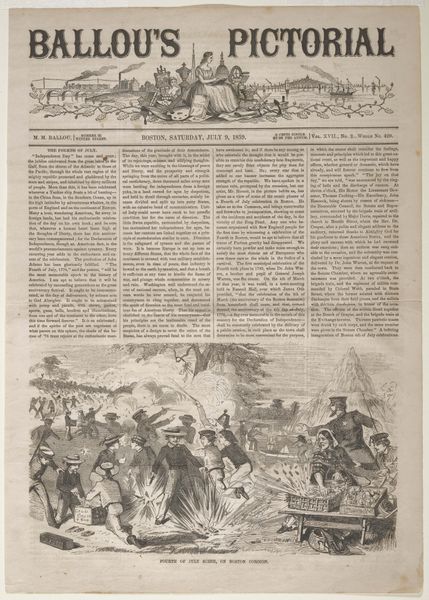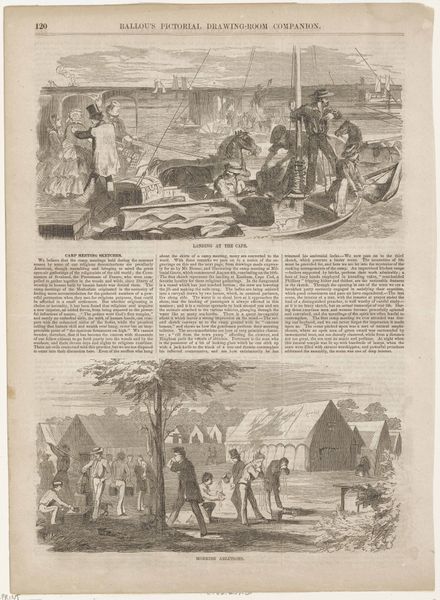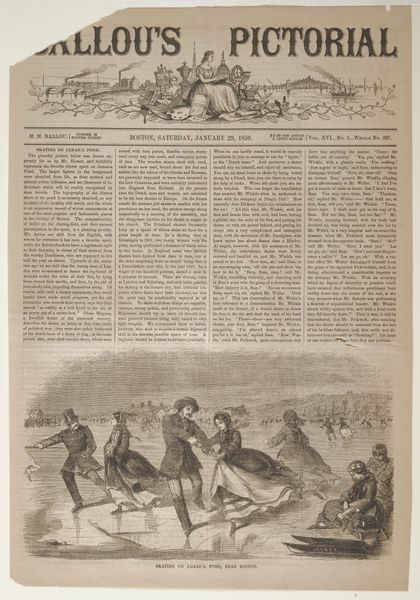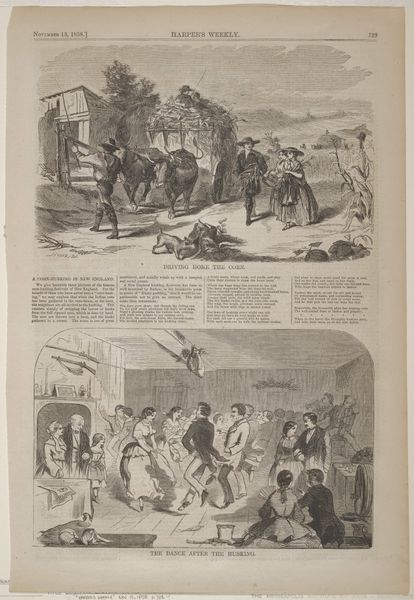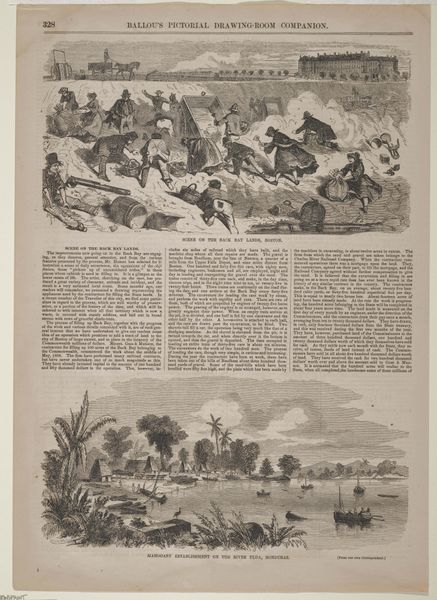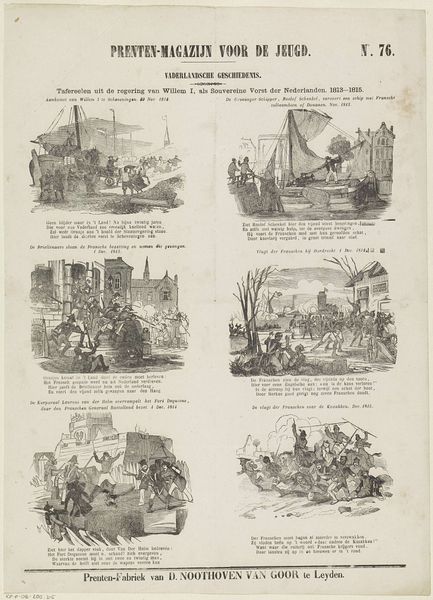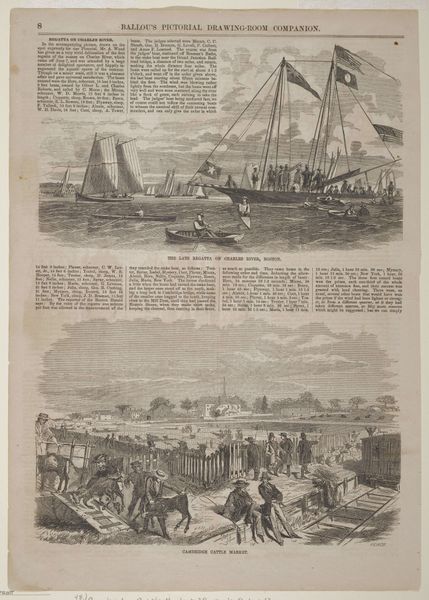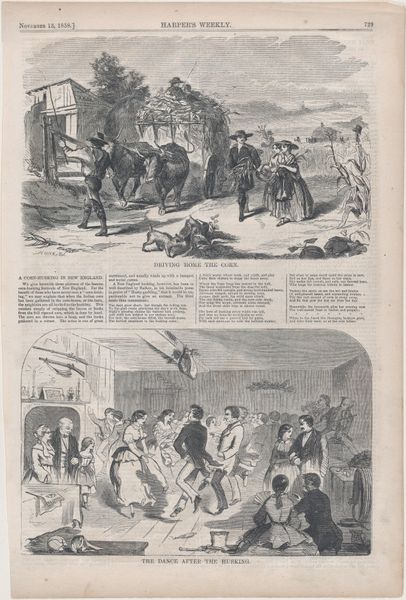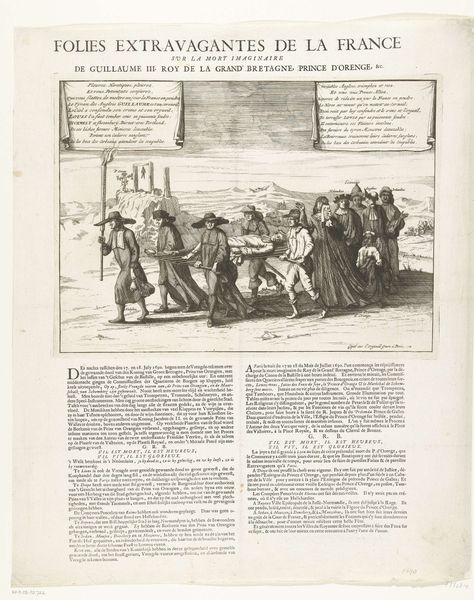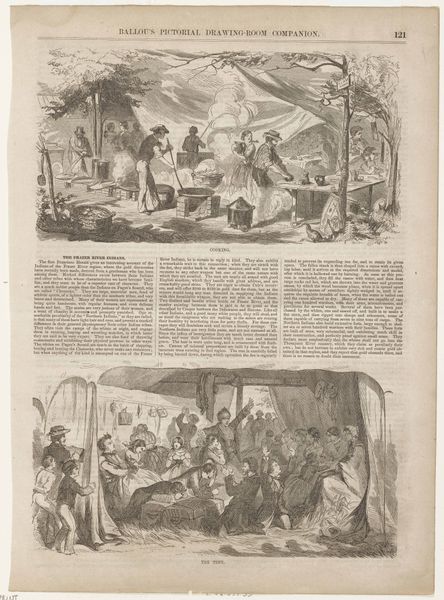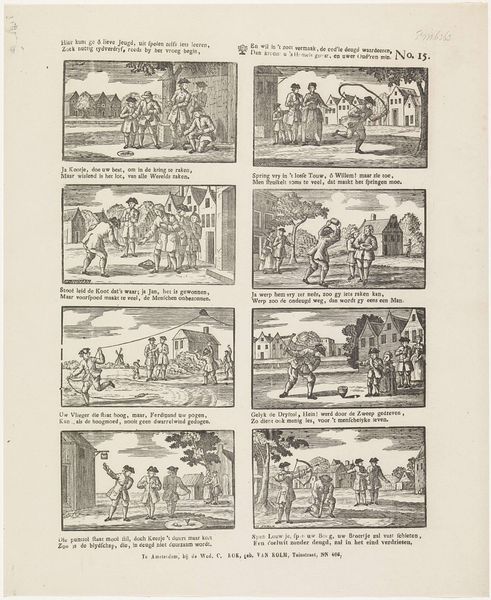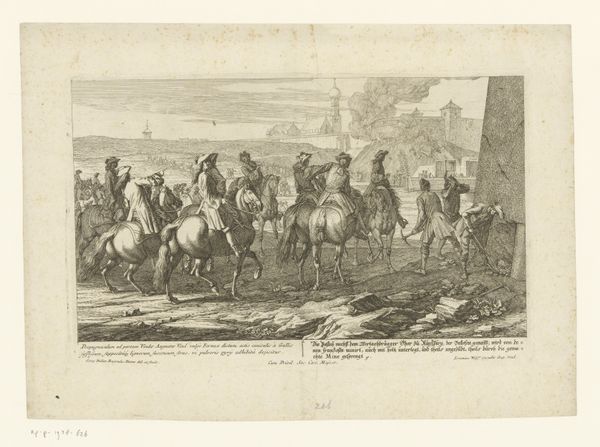
print, woodcut, wood-engraving, engraving
# print
#
landscape
#
woodcut
#
united-states
#
cityscape
#
genre-painting
#
wood-engraving
#
engraving
#
realism
Dimensions: 5 1/2 x 9 7/16 in. (14.0 x 24 cm)
Copyright: Public Domain
Curator: Winslow Homer's wood engraving, "Cricket Players on Boston Common" created in 1859, offers an intriguing look at leisure in mid-19th century America. Editor: The sharp contrasts create an interesting energy. I'm drawn to the dynamic arrangement of figures, though I do feel a subtle disquiet in the stiff postures and severe lack of softness in line. Curator: Well, this piece, like many prints from the time, comes from "Ballou's Pictorial Drawing-Room Companion", a magazine which, essentially, mechanized the process of art distribution. So the engraving is, in itself, part of the broader industrial movement that enabled leisure and new social structures. Editor: Fascinating. Viewing it now, the figures involved in this British sport are surrounded by what look to be only men. Could that represent the consolidation of male power structures within a developing American identity? Even the landscape beyond, sparsely populated and open, might symbolize the expansive potential, controlled predominantly by men at that time. Curator: Yes, exactly! Think about the labor involved: the printing, the distribution. This image enters homes as a commodity, shaped by industrial processes and reflective of emerging social and economic hierarchies in the United States. Leisure, even sport, has its place within this system. Editor: The flag, almost lost among the other details of this busy composition, has me pondering notions of patriotism and cultural adaptation. Perhaps these cricket players, a decidedly English sport played in the shadow of American industrial expansion, speak to complex negotiations around identity. Curator: Indeed. The material conditions of production—the woodblock, the ink, the printing press—shaped how this scene reached its audience, imbuing it with social meaning. And of course it was aimed at the rising middle classes, whose purchasing power facilitated this explosion of printed media. Editor: Precisely. Ultimately, viewing artwork through the lens of readily understood, but heavily nuanced imagery allows us to remember that the symbols within art provide lasting insight to our memories of who we are and what our value systems signify across cultures and throughout our world. Curator: By analyzing the tangible processes of its creation, it offers us an opportunity to unpack those visual narratives, the manufacturing as well as meaning.
Comments
No comments
Be the first to comment and join the conversation on the ultimate creative platform.
